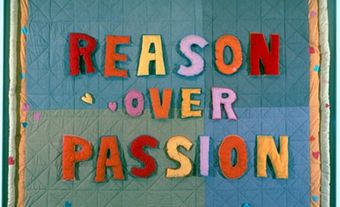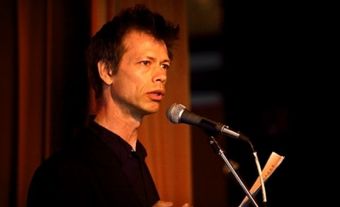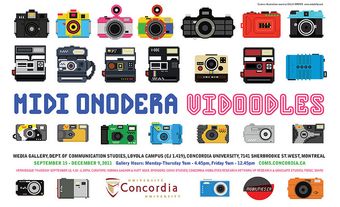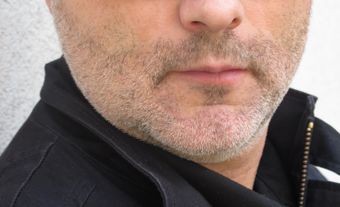Michael James Aleck Snow, CC, RCA, artist, filmmaker, musician (born 10 December 1929 in Toronto, ON; died 5 January 2023). Michael Snow was one of Canada’s most acclaimed visual artists and avant garde filmmakers. His work was concerned with redefining the relationships between various media, the acts and interpretations of perception, and the complex interplay of sound, language and meaning. A Companion of the Order of Canada and a Chevalier of France’s Ordre des Arts et des Lettres, he was the first recipient of the Governor General’s Award in Visual and Media Arts. He also won a Molson Prize, a Guggenheim Fellowship and the Gershon Iskowitz Prize, among many other honours.
Education and Early Career
Michael Snow attended the Ontario College of Art (now the Ontario College of Art and Design University) from 1948 to 1952, where he was a student of the director John Martin. Martin encouraged Snow to submit his abstract painting Polyphony to the Ontario Society of Artists’ annual show. The piece was accepted, resulting in the first public exhibition of his art.
After graduation, Snow worked for an advertising agency, made paintings, performed jazz music and travelled to Europe for the first time. In 1955, animated film producer George Dunning, who went on to direct The Beatles’ Yellow Submarine, saw a small show of Snow’s drawings and offered him a job at Dunning Graphic Films. Snow worked for Dunning Graphic Films until the company closed in 1956. During this time, he produced his first independent film, the animated short A to Z (1956). He also met his first wife, the artist Joyce Wieland.
In 1956, Michael Snow held his first solo exhibition at Avrom Isaacs's Greenwich Gallery in Toronto. Following extended stays in New York (1962–64), he and Wieland settled there in 1964. They returned to Toronto in 1972.
1960s
Between 1961 and 1967, Michael Snow’s work in all media was based on the silhouette of a woman. Whether in painting, drawing or sculpture, the prototype of the walking woman is a generic female form with breasts, a curving behind, and arms swinging as she steps forward. This important series of works, titled the Walking Woman Works, culminated in an 11-part sculpture for the Ontario Pavilion at Expo 67.
Film occupied a major place in Snow’s work since the mid-1960s. In his first major film, New York Eye and Ear Control (1964), he moved the walking woman into film and introduced an important new element, sound — in this case an original soundtrack by free jazz great Albert Ayler. The film juxtaposes the walking woman in street scenes and on rocks in water with images of real people, the sculptures always painted black or white. At one point, a woman compares herself with a cut-out of the walking woman, and the film ends with a close-up of a Black man and a white woman making love.
The film that established Snow’s reputation and that remains his best-known work is Wavelength (1967). Wavelength is a 45-minute zoom shot from one side of a loft in SoHo in New York City to the windows on the other side of the street, accompanied by the sound of a sine wave. The film is without narrative but is full of incident: at one point a man stumbles out and collapses on the floor; at another, the man sits at a desk beside the window and talks on the phone; throughout, the screen flashes green, yellow and blue. The camera haltingly zooms in on a section of wall between the windows where there is a drawing of two walking women and a photograph of water. The film won the Grand Prize at the 1967 Knokke experimental film festival in Belgium.
Snow’s next major film, the three-hour La région centrale (1971), is organized around the circular movements of a robotic arm designed to hold a camera directed at the landscape of northern Quebec. The film has no human perspective on the landscape; it consists of swirling images of rocks, tundra and mountain vistas, both right side up and upside down.
1970s and Beyond
The films Michael Snow began making after he and Wieland moved back to Canada in the early 1970s are less formal and cerebral than Wavelength and La région centrale and more whimsical. The four-and-a-half-hour “Rameau’s Nephew” by Diderot (Thanx to Dennis Young) by Wilma Schoen (1974) begins with Snow whistling in front of a bright red background; it goes on to a sequence of people at a tea party speaking their lines backwards. Corpus Callosum (2002) is named after the nerve pathway between the two hemispheres of the brain. It was Snow’s first digital work and continued his ongoing exploration of the nature of mind and perception, focusing on the way the brain manipulates information to create images.
In 1970, Michael Snow represented Canada at the Venice Biennale. He was also given a retrospective exhibition of his work at the Art Gallery of Ontario. In 1978, a comprehensive survey of his work was shown in Lucerne, Switzerland, and in Bonn and Munich, Germany. The same year, he received a sculptural commission, Flight Stop, for Toronto's Eaton Centre, for which he suspended casts of Canada geese in mid-flight from the mall’s cathedral ceiling. For Expo 86 in Vancouver, he was commissioned to produce a major work in holography, resulting in The Spectral Image, a grouping of installation pieces involving 48 holographic images.
In 1989, Snow completed The Audience at the SkyDome (now the Rogers Centre) in Toronto, large gold-painted sculptures of fans above the northeast and northwest entrances to the building. A major retrospective of his work was held at the Art Gallery of Ontario and Toronto’s Power Plant gallery in 1994. In celebration of his winning the Gershon Iskowitz Prize in 2011, Snow's work was featured in an exhibition at the Art Gallery of Ontario titled Objects of Vision. It comprised abstract sculptures from the 1950s, the late 1960s and 1982.
Music
Although more immediately identified with the visual arts, Snow was involved for many years in improvised music. He was encouraged by the boogie-woogie pianist Jimmy Yancey during visits to Chicago in the late 1940s, and played piano in Toronto traditional jazz groups while a student at the Ontario College of Art. He took up the trumpet in the early 1950s.
After playing piano with the Dixieland trumpeter Mike White (1958–61) and with his own bebop groups (1958–62), Snow was drawn to free jazz through his association with the Artists' Jazz Band in Toronto and with the free-jazz movement's leaders in New York; some of them (Albert Ayler, Don Cherry et al.) appeared in Snow’s film New York Eye and Ear Control (1964). Snow continued to perform with the Artists' Jazz Band and was a member (1966–67) of the Toronto New Music Ensemble and a founder in 1974 of the CCMC. The last — with which he played piano, trumpet, guitar and synthesizer — served as the focus of his musical activities through the 1980s. He also gave solo piano concerts in Toronto, Quebec City and New York.
Snow's solo albums, meanwhile, extend into the medium of sound the same extensive manipulation of a single idea, theme or technique that is characteristic of his work in the visual arts (e.g., the 50-minute Sinoms, in which he multi-tracked some 20 voices, with as many different French and English accents, reading a complete list of the mayors of Québec City, at some points making a simple juxtaposition of pronunciation and at others creating the effect of a choir). In his films, beginning with New York Eye and Ear Control, he often combined musical and visual elements to create an “image-sound composition.”
Legacy and Honours
Michael Snow's work was continually concerned with defining and redefining the relationships between various media, the acts and interpretations of perception, and the complex interplay of sound, language and meaning. He received critical acclaim in the US and Europe as an experimental filmmaker. In 2000, he was awarded a Governor General's Award in recognition of his accomplishment in this area. A member of the Royal Canadian Academy of Arts, Snow received a Guggenheim Fellowship in 1972 and a Molson Prize in 1979. He was appointed an Officer of the Order of Canada in 1981, a Chevalier de l’ordre des Arts et des Lettres, France in 1995, and a Companion of the Order of Canada in 2009. He won the Gershon Iskowitz Prize in 2011.
Snow also received honorary degrees from Brock University (1975), the Nova Scotia College of Art and Design University (1990), the University of Victoria (1997), the University of Toronto (1999), Emily Carr University of Art and Design (2004), and the Université de Paris I, Panthéon-Sorbonne (2004).
See also Maclean’s Article: Michael Snow Plays his Trump Card.

 Share on Facebook
Share on Facebook Share on X
Share on X Share by Email
Share by Email Share on Google Classroom
Share on Google Classroom








